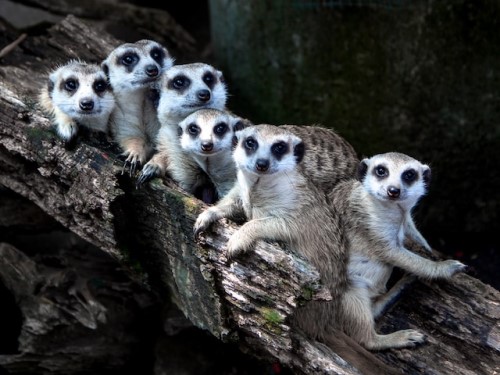ARCTIC FOX
scientific name: Suricata suricatta
Meerkats are small, fascinating mammals known for their social behavior and unique appearance. They are members of the mongoose family and have captured the hearts of people worldwide with their inquisitive nature and cooperative lifestyle. This page will provide a fun and informative overview of meerkats, including their physical characteristics, habitat, behavior, diet, reproduction, conservation, challenges, and five fun and unusual facts.
Physical Characteristics:
Meerkats are small animals, weighing between 1.6 to 2.2 pounds and measuring around 9.8 to 13.8 inches in length, excluding their 9.8 to 11.8-inch tail. They have a slender body, short legs, and a pointed snout. Their fur is light brown or grayish-brown with dark bands across their backs, providing excellent camouflage in their desert environment. Meerkats also have dark patches around their eyes, which help reduce glare from the sun.
Habitat:
Meerkats are native to southern Africa, primarily inhabiting the arid Kalahari Desert in Botswana, South Africa, and Namibia. They live in open, sandy areas with sparse vegetation, where they dig elaborate underground burrow systems called "dens" to escape predators and the desert heat.
Behavior:
Meerkats are highly social animals that live in groups called "mobs" or "gangs," consisting of up to 30 individuals. They have a complex social structure, with a dominant breeding pair and cooperative care of offspring.
Meerkats are known for their sentry behavior, where one individual stands guard to warn the group of approaching predators. They are mainly diurnal, foraging for food during the day.
Diet:
Meerkats are omnivorous, feeding on a diverse diet that includes insects, spiders, scorpions, small mammals, birds, eggs, reptiles, and plant material such as tubers, roots, and fruits. They have a high tolerance for venom and can safely consume venomous prey like scorpions.
 Reproduction:
Reproduction:
Meerkats have no specific breeding season, and mating can occur throughout the year. The dominant female gives birth to a litter of 2 to 5 pups after a gestation period of about 11 weeks. All group members help care for the young, with duties such as babysitting, feeding, and teaching them survival skills.
Conservation and Challenges:
Meerkats have a stable population and are not currently considered endangered. However, they face threats such as habitat loss, climate change, and predation. Conservation efforts for meerkats focus on habitat preservation, monitoring populations, and promoting sustainable land-use practices.
Five Fun and Unusual Facts:
- Meerkats have remarkable immunity to venom, allowing them to consume venomous creatures like scorpions without harm.
- To warm up in the morning, meerkats often engage in "sunning," where they stand upright with their bellies exposed to the sun.
- Meerkats have a unique system of vocal communication, using different calls to alert group members of specific dangers.
- Baby meerkats are born with their eyes and ears closed, opening them around 10 to 14 days after birth.
- Meerkats can close their ears to keep dirt out while digging in the sand.
Conclusion:
Meerkats are intriguing creatures with a captivating social structure and a remarkable ability to adapt to their harsh desert environment. By learning about these fascinating animals and supporting conservation efforts, we can help ensure their survival in the wild for future generations to enjoy.


